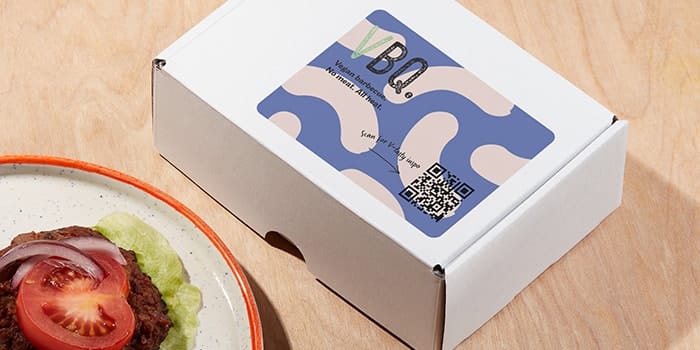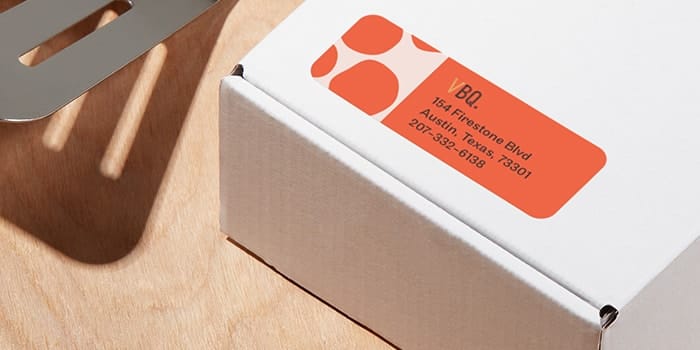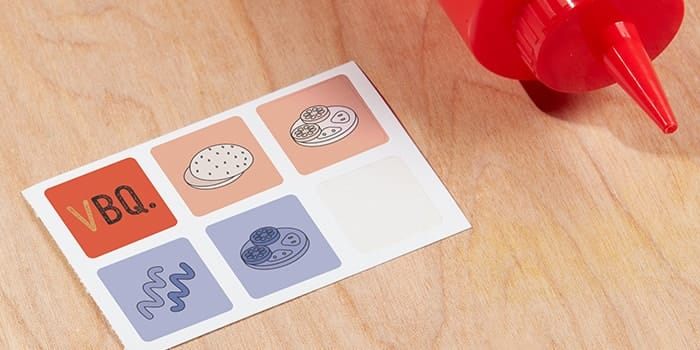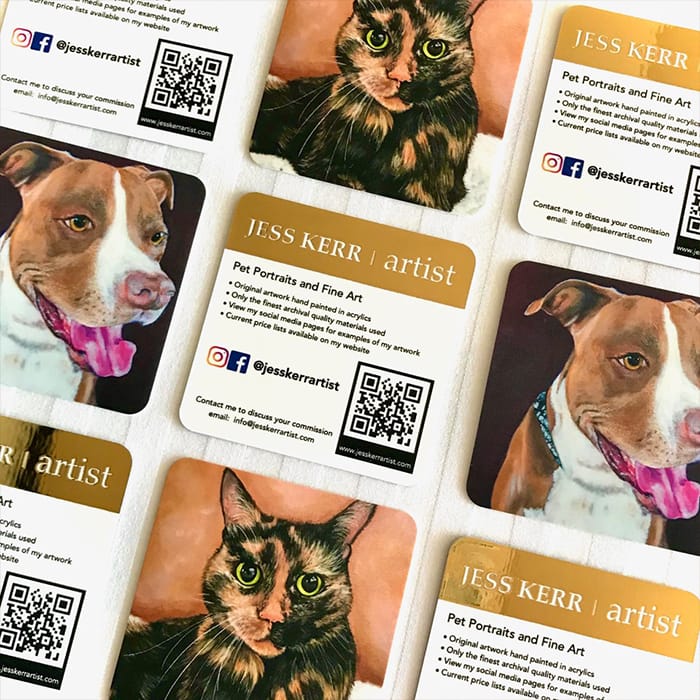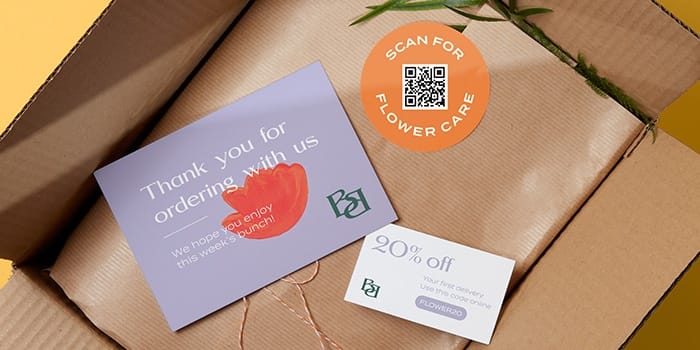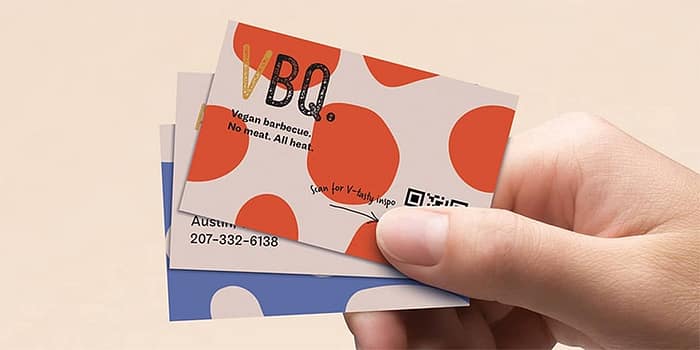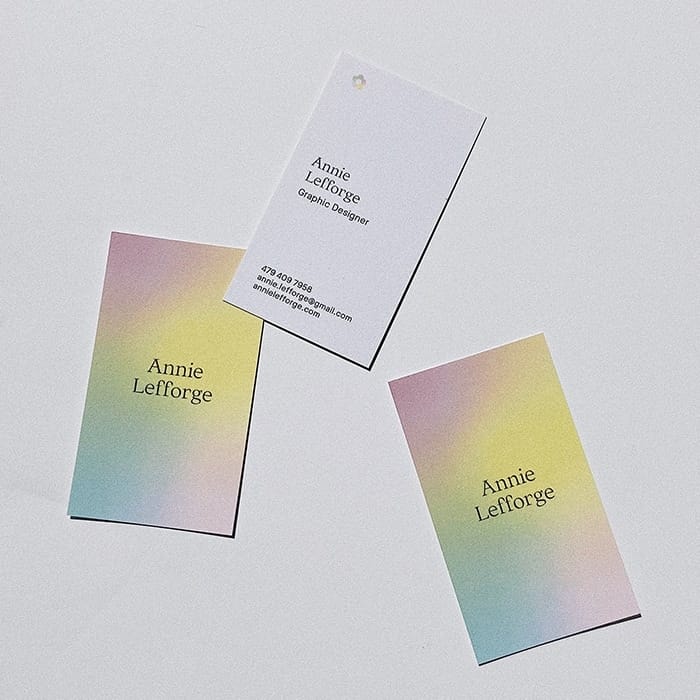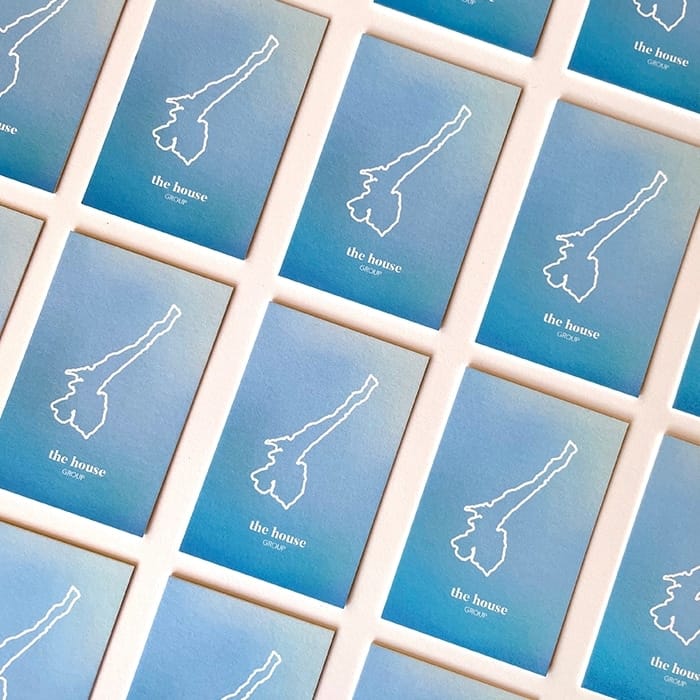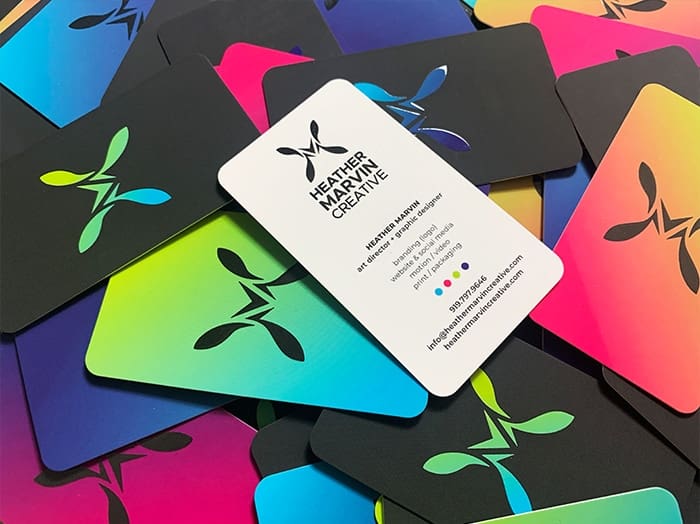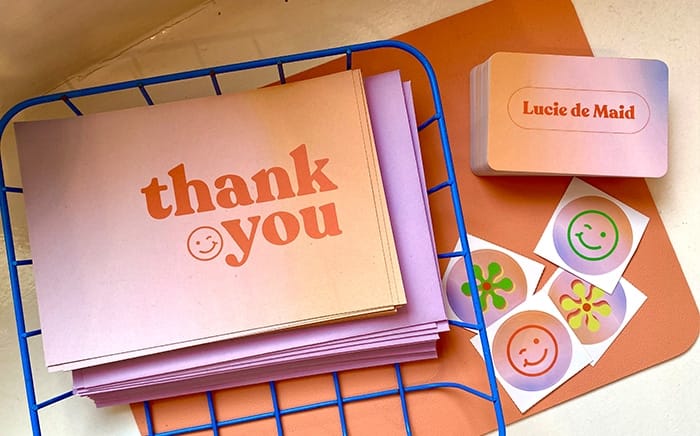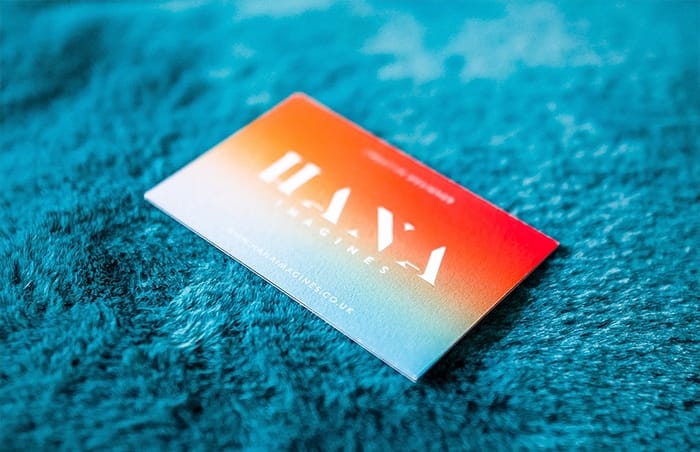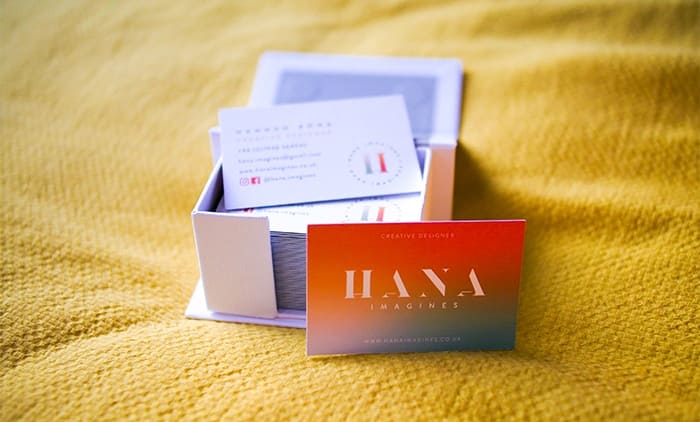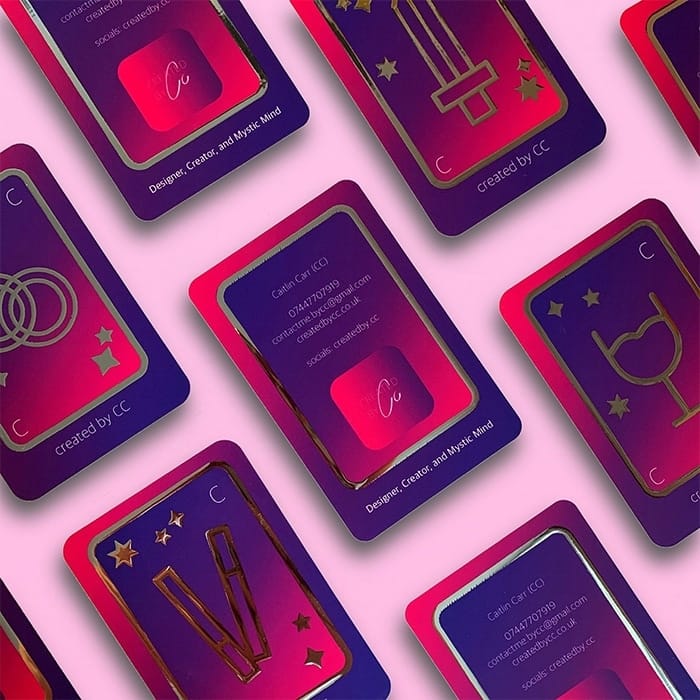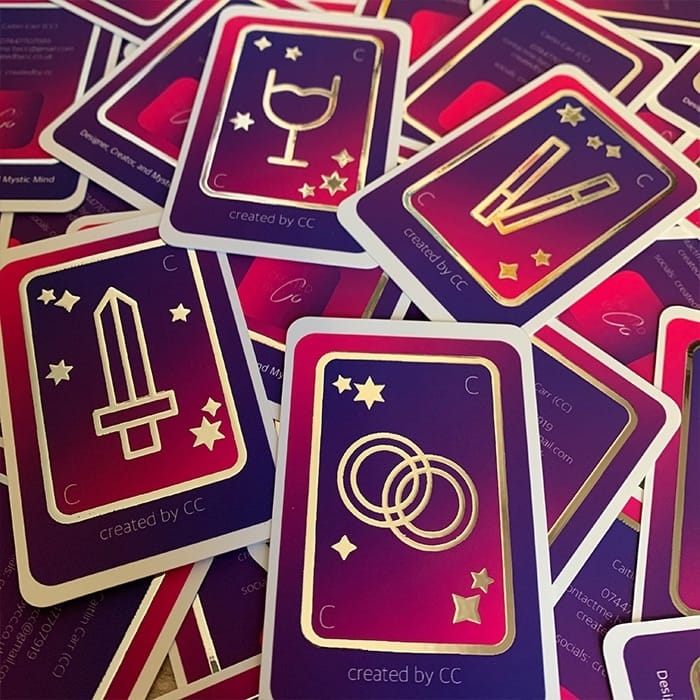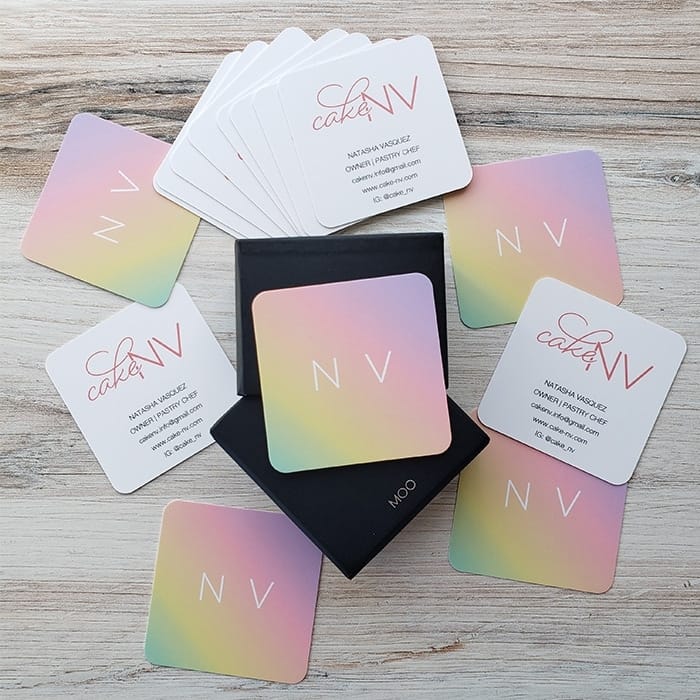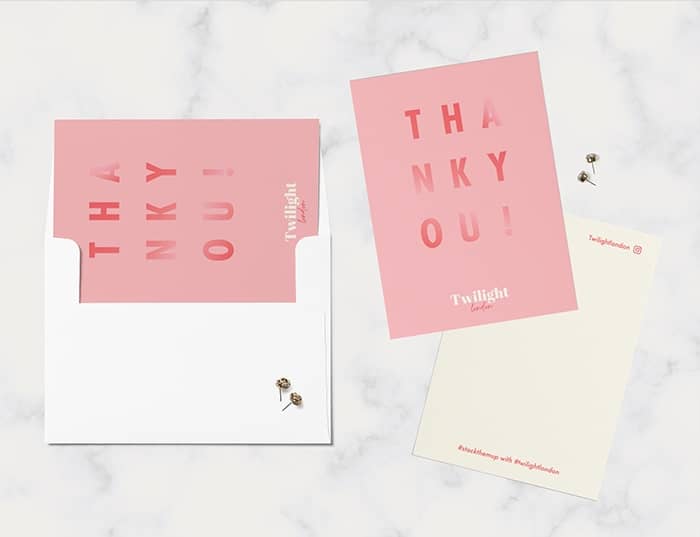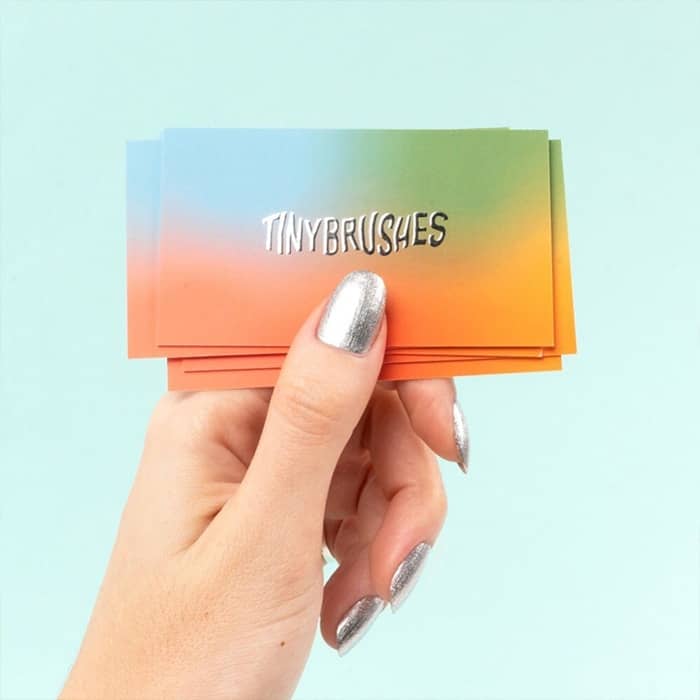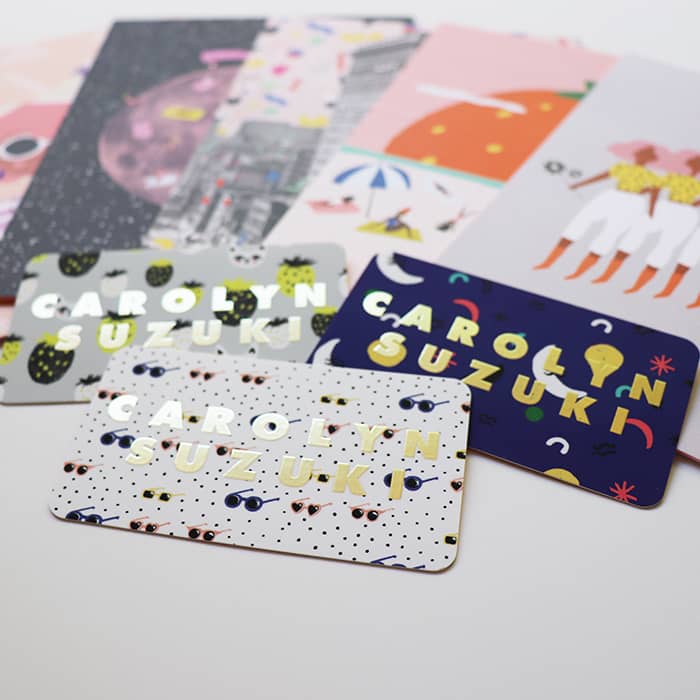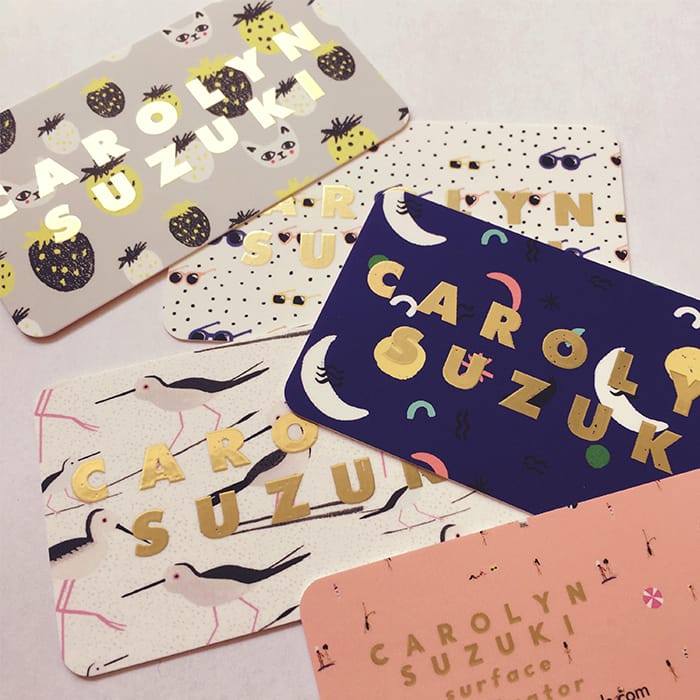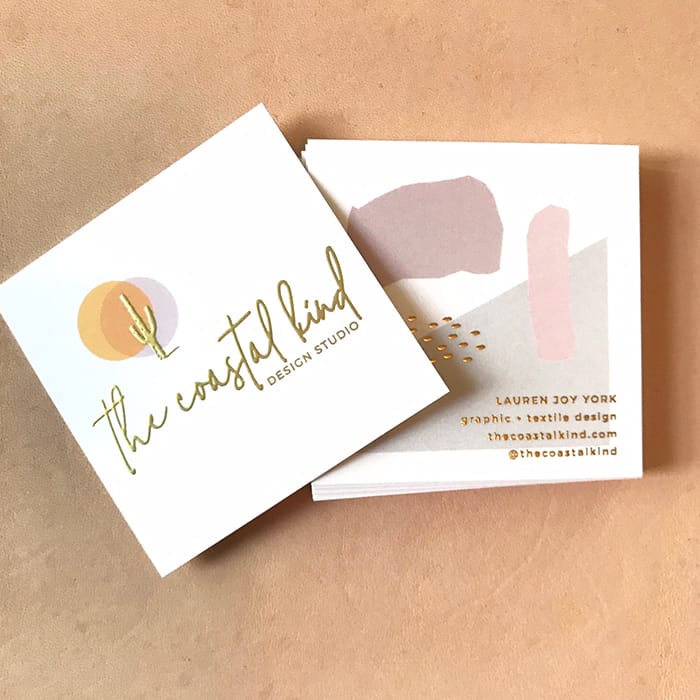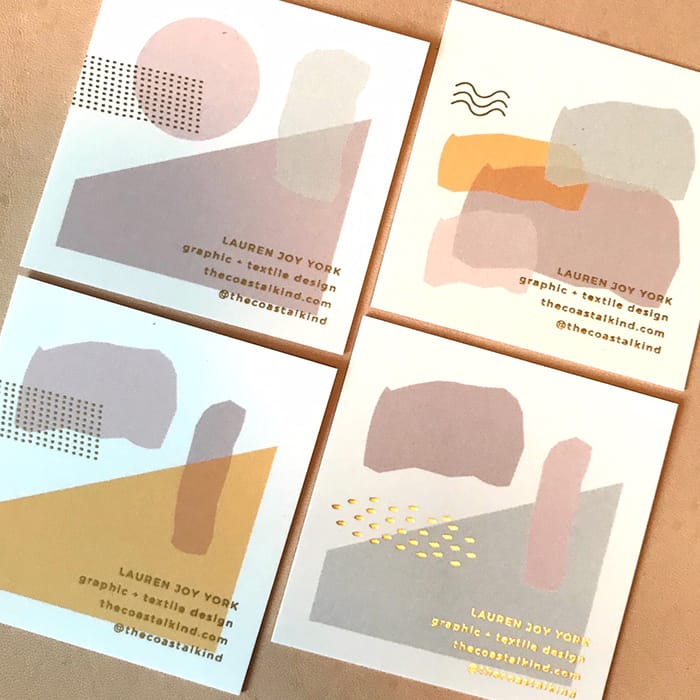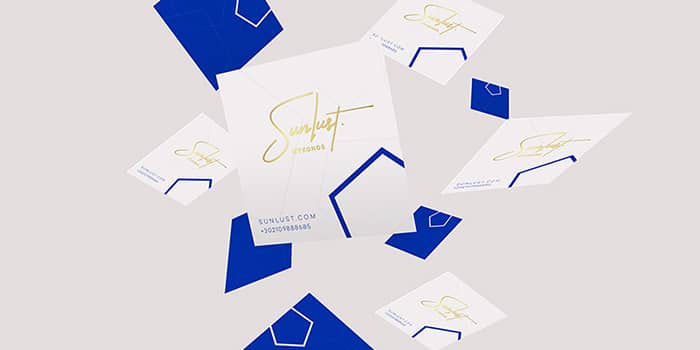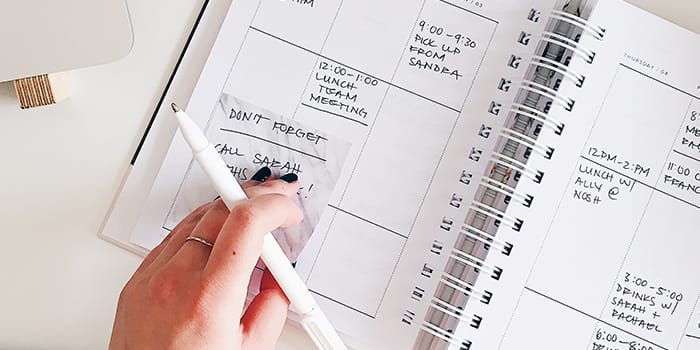7 creative ways to use Stickers for your business
From product labels to sticker freebies, get inspired with these creative Sticker uses.
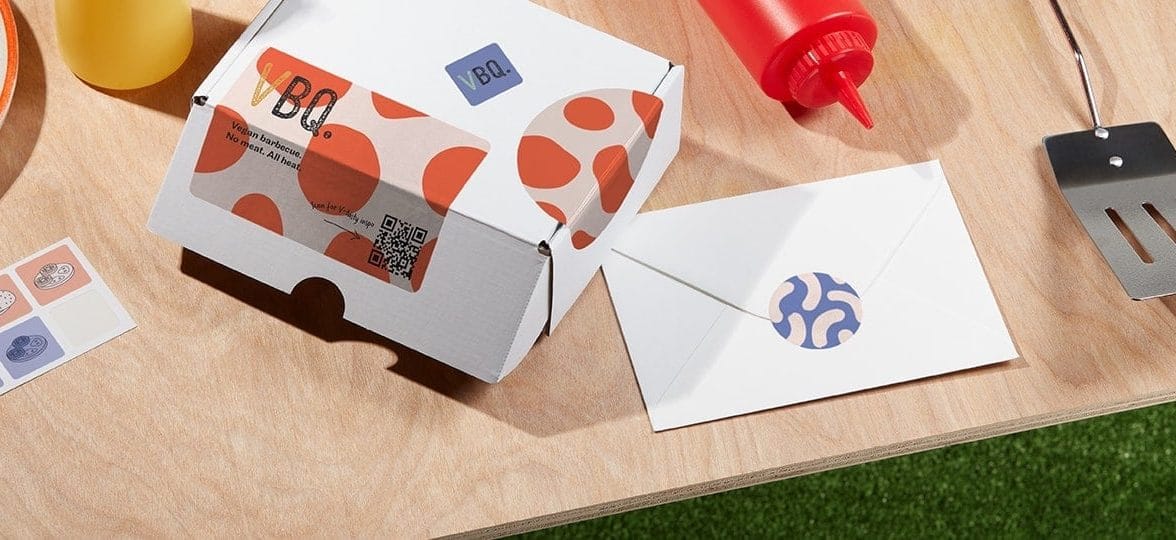
We loved them as kids, and we love them now. Stuck on laptops, suitcases, or even street lights, stickers have that playful energy that makes them so addictive. And when they’re MOO Stickers, they have that extra pizzazz that comes with premium quality and customization. But their potential goes way beyond their decorative value. They can help you create powerful branding and find their place in every aspect of your business. Admin, shipping, promotions… you name it, there’s a Sticker for it.
Give Stickers a chance to make your brand stick. From product labels to sticker freebies, discover how to use Stickers and Labels from MOO to grow your business in style.
Extra creative product labels
If you’re wondering what to use Stickers for, it’s the most obvious option – and for a good reason. A great product label catches the attention of customers, and can turn a simple candle into a work of art. It’s one of the most important mediums to showcase your branding and make a lasting impression. With Printfinity, you can print a different design on every single Round Sticker or Rectangular Label in a pack for free. That means you can create amazing labels for all your products in one order, even if your budget is limited. We’re starting at 50 Stickers in a pack, so you can experiment with different messages, colors and designs on each and every one of them.

Promotion vignettes (and more)
Last chance to buy, limited edition, discounts… Use Stickers to differentiate items in a fun, colorful way. You can use color-coding to make products stand out, and help customers find what they’re looking for more easily. Vignettes are also a real money-saver. Instead of having to create new hang tags for products on sale, you can just stick a mini Sticker from your StickerBook on it. Moved on to a bigger discount? Just cover it with a new one!
Sticker seals
Sending snail mail? Use Round Stickers as envelope seals for your business letters and customer mail. Stickers are a great way to add your branding to everything and help people remember you. They also have that old-school wax seal vibe that always gives some extra oomph. Simply add your logo on a nice colorful background to create a memorable Sticker seal for your mail. You can then use your Stickers on envelopes, packaging, and even documents as a seal of approval.
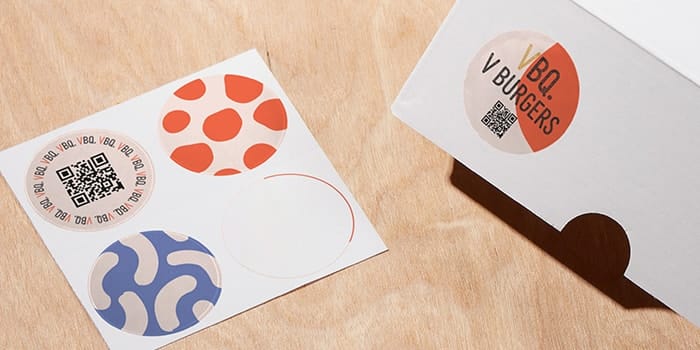
Custom packaging Stickers
Power up your packaging with Stickers. They add personality to everything, and can turn a simple parcel into a memorable unboxing experience. Packages may be the only physical touchpoint with your customers, especially if you’re an online business. It makes packaging a key opportunity to convey your brand’s identity, and build trust and loyalty. That’s where Stickers can play an important role. Custom packaging Stickers can tell your brand’s story in a powerful, visually appealing way. With your logo, visuals, tagline, instructions, or simply some fun messaging, you can put a smile on your customer’s face – and even secure some Instagram content from them. MOO Stickers come in a range of shapes and sizes to help you create unforgettable packages. Plus, they’re waterproof, tear-proof and ready for the rough and tumble of a delivery truck or post bag. The perfect Stickers for packaging.
Address labels
There are many ways to use Stickers for your mail – and seals is only one of them. Creating custom Return Address Labels is a great way to brand your mail in a subtle yet memorable way. Add address Stickers to your envelopes and packages to make them easy to return, and to build trust with your customers and clients, showing you’ll be here if they encounter any problem.
Signage
Go big, or go home! Whether they’re round or rectangular, big Stickers can make great signage for your shop or venue, especially for promotions and events, but also for safety reasons. Use Stickers strategically in key areas such as your shop window to make sure they stand out, and remove them when they’re not needed anymore. MOO Stickers are made of thick, durable vinyl, which makes them easy to peel without tearing.
Sticker freebies
Our favorite. Sticker freebies are everything you pictured and more. Slipped into every order or in your customer’s shopping bag at checkout, these low-cost goodies are guaranteed to put a smile on their face. Everyone loves a free Sticker! Plus, if they stick it on their laptop or suitcase, you’re turning them into a walking promotion for your business. Create sticker freebies in different sizes and in a variety of designs so customers can collect them, purchase after purchase. You give them Stickers (and a great experience), they give you loyalty. It’s a win-win situation!
Now you know how to use Stickers for your business, choose from our versatile range of Stickers and Labels.
Failure is the pillar of success. Yes, it can be daunting, and the fear of failing often prevents us from taking risks. But failure is also an invaluable learning tool and the hidden foundation of most successful businesses and innovations. Learning from our experiences helps us improve and refine ideas, setting the groundwork for future success.
Haunted by the memory of a failed business? From where things go wrong to how to revive a failing business or project, learn from your experience to revisit the ideas you care about.
Why do businesses fail?
Let’s start by setting things straight: just because your business failed, doesn’t mean you’re a failure. All the most successful people have failed before. Do you know why? Because they’ve tried. They took a risk, and it didn’t necessarily pay off the first time. Or the second. But they kept trying and, eventually, they found their own recipe for success. Failure is an act of courage. So pat yourself on the back: you’ve been brave enough to try, and now the challenge is to take the hit and bounce back.
So, why do businesses fail? Spoiler alert: here’s no straight answer. There are many reasons why businesses fail, but here are some of the most frequent ones:
Jumping in too fast
A great idea is a good start, but a successful business is built on hard work and research. Did you have a detailed business plan before taking the leap? Lack of preparation is one of the most frequent reasons why businesses fail. Did you take the time to learn more about your consumer target, their needs and their resources? Did you take all your costs into account and establish a clear projection of revenue?
Running out of money
Unfortunately, many projects fail due to a lack of money. Starting a new project often requires all your time and attention while it can take much longer to see the results of your hard work. Without a stable income or enough financing, it can get very difficult to continue developing your projects while paying your bills, especially if you have expensive set up costs and late-paying customers. Make sure you’ve put aside the resources you need to dedicate all your time and energy to your project before you get started, so you won’t have to worry about money.
Overloading yourself
Many new businesses are a one-person company. That means you have to wear many different hats with limited time on your hands. You have to manage your accounting and marketing activities on top of shipping, web design and whatever else you need for your business. Running a company alone often means you lack sufficient training in one or more areas of your business, which creates a level of complexity very few people can handle. This often leads to burnout and could be the reason why your small business failed. Don’t be afraid to ask for help, or partner with people with the skills you need to make your business stronger.
Overlooking data and business concepts
Passion is one of the main drivers of business success. But it’s not enough. Building a solid business is all about observing the market and listening to your target customers. Again, research is key to understanding your strengths and weaknesses and your best opportunities for growth. A bad location can ruin a business, and so can a poorly prepared marketing campaign. Don’t overlook the key elements of a healthy business strategy – from marketing to benchmark and customer data analysis. Losing touch with what your customers expect might make customers lose touch with your brand.
Lacking flexibility
In business like in life, anything can happen. Be prepared! You might have started with a very specific business idea, but you have to be ready to iterate if you don’t get the results you expected. Not being able to adjust and adapt your project to the evolving needs of your customers can be what makes your business fail. Focus on your target audience. The pandemic is a good example of an unexpected change of context: the businesses that managed to stay afloat are the ones which stepped up their delivery game and found solutions to stay in touch with their customers’ needs (sometimes with some pretty cool marketing materials).
Failure is a part of life
It is! The first step to success is to recognize failure is not the end – it’s a step towards something better. There are many benefits to failure. It’s not just a saying: what doesn’t kill you does make you stronger. Failure teaches humility, and makes you appreciate success even more – because you’ve put in the work for it. A failed project is also an opportunity to reevaluate your goals, and progress towards a better version of your idea – and of yourself.
Accept failure as a part of life. It says nothing about your value as a human being. It’s also an experience you share with most people, if not everyone. We said it before, and we’ll say it again: failing is a sign that you took a risk. You got out of your comfort zone to bring something more to the world. Be proud of having tried!
Learn from your mistakes
Nelson Mandela said “I never lose. I either win or learn.” Don’t cry over a failed project. Learn from it, and bounce back. Running a project post-mortem is the best way to understand your mistakes and draw lessons from your experience. Identify the causes of the failure, and use this knowledge to prevent them in the future. Without a project post-mortem, you run the risk of repeating the same mistakes. It will allow you to improve processes and refine your idea.
Here are a few elements to look at to get you started:
- Customers. Did they understand your product or service? Did you listen to their feedback?
- Financing. Did you calculate it right? Was anything overlooked in your preparation?
- Product & pricing. Was your product or service qualitative enough? Did people find it useful? Was it priced well?
- Positioning. Did you choose the right messaging? Was your brand perceived as you intended it to?
- Competitors. Did you have competitors offering the same quality for cheaper prices? Did you have a clear point of differentiation?
- Partners and colleagues. Was there enough people on the team? Did they have the necessary skills? Did people communicate clearly? Was there any confusion regarding people’s roles in the project?
- Suppliers. Were the items delivered on time and according to your expectations? Was the supplier transparent about their prices, quality and delivery times?
- Marketing & promotion. Did the right people hear about your offer? Did you use marketing channels the right way? Did you over- or under-invest in some channels?
- Context. Did a change in context affect your business in any way? Did you adapt, or did you stick to your original plan?
These are just starting questions to better understand what went wrong, avoid repeating the same mistakes when you start a new project, and, most importantly, to find closure.
How to revive a project
Now you know what you’d have done differently, it’s time to get back on the horse – that is, if you feel like it. Reviving a project is all about trust and hard work, whether it’s a failed business or a stalled project. Yes, it hurt the first time – so don’t start again until you feel ready. It’s perfectly alright to go back to your previous activity if you find it makes you happier. At the end of the day, success is about what makes you happy and gives you a feeling of fulfillment.
Simply changing the name of your business won’t be the answer to everything
If you’ve only put that project on hold and you feel ready to try again, there are a few things you can do to get back on track. Once you’ve run your project post-mortem and you have a clear idea of what went wrong, you can treat the problem at the root. Usually, what drove a business project to the ground is a combination of factors, so it’s important to take the time to study potential solutions – simply changing the name of your business won’t be the answer to everything. You can then follow these few principles to know how to revive your failing business or project effectively.
Start again smaller
It doesn’t necessarily apply to all types of businesses, but it’s a good rule of thumb for most. If you’ve run out of money or burned yourself out the first time, chances are you tried to do too much too fast. Starting small will allow you to test the waters and assess what works and what doesn’t progressively. Sure, high risks equals high rewards, but also less flexibility. It will take more time to get where you want to, but you’ll learn much more along the way and you’ll build a stronger business – maybe way different from what you had in mind in the first place.
Find (better) partners
If your ambitions go beyond your skills and resources, surrounding yourself with the right people is the best way to create solid foundations for your business. While they can be a very helpful support system in the first months or years of your project, don’t necessarily favor your friends and family as partners. Find people who complement you, people who will bring the skills that are vital to your business. You can do so through networking events – or maybe you know an old colleague who perfectly fits the description. Building a strong team with clear responsibilities is a good way to ensure the longevity of your business – and make sure no aspect of your project is overlooked.
Iterate
In the words of Samuel Beckett: “Try again. Fail again. Fail better.” A successful business is one that’s flexible and able to adapt quickly. Whether you call it “fail fast” or “test and learn”, the idea is to try ideas and adjust them rapidly based on what worked and what didn’t. It can be about a small aspect of your project, like rethinking the design of your travel cup’s lid so it doesn’t leak, or about your positioning and business model. The latter is called “pivoting”– changing a significant aspect of your business for a better performing one – and successful businesses like Groupon, Starbucks and Pinterest went through this process. See? Everyone makes mistakes – what differentiates success from failure is how much you learn from it.
Revive your stalled project and bring your best ideas to life with Seth Godin’s brilliantly simple (and simply brilliant) workbook.
QR codes have recently rocketed to digital stardom, despite being around since the nineties. Their renewed success comes from them being a hands-free way to promote almost anything, from pub and restaurant menus to salon services, websites and portfolios.
Here’s a handy guide for all things QR code, we’ll even tell you what the heck a QR code is and how to use them for your business.
What even is a QR code? We’ll tell you
QR stands for “quick response”, and it’s a 2D, computer-generated barcode that contains information. Simple. It was invented in 1994 by a Japanese automotive company and is inspired by game pieces on a Go Board. It borrows a lot from its ancestor, the barcode, but beats it when it comes to fast readability and storage capacity.
Ready for more? Here’s how to use a QR code
Think of QR codes as like a digital label you can scan with your phone’s camera to open all the information it holds. Just hover over a QR code using your phone’s camera or open a specific app to scan it. You just unlocked the world of QR codes!
Let’s get stuck in – everything you can do with a QR code
In short: loads! You can use QR codes to easily share contact information through vCards, send URLs, emails, phone numbers or even deliver text messages. They’re particularly good at converting physical interactions into online actions, so pop them on your brand’s printed goods like flyers, menus, and business cards.
Here’s some more QR code examples to get you inspired:
Promote your website
Use a QR code to link to your business website from your Business Cards or Flyers. It’s a great way to make it even easier for potential customers to learn more about you or your brand. You can add it next to your contact information and add a line to tell them what it’s about.
Create a safer experience
The Covid-19 pandemic has changed the way we think about in-store customer experiences, especially in places where transmission risks are higher, like restaurants. QR codes have been great for contact tracing in general, but also to help reopen bars and restaurants safely. With QR codes, you can prompt customers to register with contact tracing apps from the Menu or an informative Postcard without having to leave their table. If you want to limit touchpoints, you can also stick a vinyl Sticker directly on the table, with a QR code linking to your online menu where they can order and pay in a safe way.
Share some inspiration
If you have a company blog or a social media account where you share tips and inspiration, promote it on your marketing materials! Link to your blog or Instagram account from your brand Stickers, product instructions or care card to help them get the most out of your products or services. For example, if you’re a vegan barbecue brand, you could link to your recipe blog from your instruction cards, so your customers get more ideas on how to cook your delicious vegan meals. Selling jewelry? Link to your Instagram or Pinterest from your backing cards to share more inspiration and styling ideas.
Show your portfolio
Our Printfinity option lets you showcase your portfolio on your Business Cards or Postcards. Take it a step further and use a QR code to link them to your online portfolio. Whether it’s your Instagram, Behance or a full-on website, give potential clients as many opportunities as possible to see more of your amazing work.
Slide into their contact list
Email, phone, vCard – you name it, QR codes can share it. Don’t give potential clients an opportunity to lose your contact details. The easier it is for them to save your number or email, the more likely they are to get in touch. Keep that business coming!
How to make a QR code
When you’re creating a design online, our MOO QR code generator lets you create and add a custom QR code directly into it. If you’re using one of our customizable templates, you can also use our QR code tool (just make sure there’s an image placeholder in the design). The good news is, it works for all of our print products!
Now you know everything, from what QR stands for to how to make a QR code. Got your fill of QR code ideas? Create your own with our QR code generator when you design your MOO products online.
Even if you’re not a born salesperson, you can promote your ideas effectively with a well-planned pitch. Take a look at these easy-to-follow pitch tips to make an impression.
1. Prepare with care
Making a pitch is all about preparation. List the ingredients of your pitch to make sure it’s foolproof. What goes into all great pitches? Well, there’s the elevator pitch – more on that in a moment – which is a great starting point. It gives your audience the kernel of your idea and leaves them eager to find out more.
Mention your market research – show that there is an audience for your project or product, and back up your findings with hard data or consumer testimonials if possible. You’ll also need to summarize your business plan. A good pitch covers all the key points of your plan. Get into the practicalities of how you will execute your big idea, including things like supply chain, logistics and product manufacture. Make sure the audience knows you’re about details as well as big ideas.
Touch on your customer lifecycle and how you’ll market, promote and build loyalty around your product or service. If you have ideas about loyalty schemes, offers and promotions or the kind of marketing channels and strategies you’ll use, mention these too.
You’ll find lots more helpful tips in our article on how to prepare for your presentation.
2. Have an elevator pitch
The elevator pitch is a one-sentence summary of your proposition – the thing you want people to remember after they leave the room. It needs to explain what your idea does, who it’s for, and why it’s great. To give an example, here’s an (imaginary) elevator pitch for the Rubik’s Cube:
“A colorful pocket-size puzzle box for all ages that can be twisted in every direction.”
A really effective elevator pitch should be just detailed enough to intrigue the audience and leave them wanting more, while staying as succinct as possible. To really boil your idea down to its bare bones might take a little bit of head-scratching, but luckily you have plenty of time to finesse it before the big day.
3. Practice your pitch
Your pitch isn’t a performance, exactly – you don’t need to learn a speech off by heart or choreograph exactly where you’re going to stand. In fact, if your sales pitch is too polished it can start to feel artificial. But with a bit of rehearsal, you can make your delivery more confident and be ready to answer questions when the big day comes.
Ask a friend, colleague or family member to act as your dummy audience and run through your pitch in front of them, complete with slides. Have them time your pitch, so you’re aware of how long each part takes and make sure you stay within your target timeframe. Encourage your “practice audience” to ask questions too – they’ll probably come up with some angles you haven’t considered yet, and help you understand how to pitch better.
4. Don’t skimp on basic explanations
When you live and breathe an idea, it’s easy to overestimate how easy it is for others to understand. Even if it feels like you’re spelling out the obvious, make sure you include the basic details of your proposal, including the background to how you came up with it, and any specialized knowledge you gained on the way to developing it.
Again, practicing your pitch on a friend or family member who hasn’t been involved in your work can be really helpful here. They can help you gauge whether you’re pitching at a level that’s too high, too low or just right for your target audience. A good pitch has to be accessible to anyone!
5. Know what makes a presentation boring
It’s a fact of life – some presentations have your attention from the start, while others leave you watching the clock after a few minutes. How do you make a pitch one of the good ones? Here are some pointers for how to make a presentation engaging and improve your pitching skills.
Make eye contact
This is one of the most important pitch tips to connect with your audience. However intimidating that sea of faces might be, remember they’re all just people. You can use eye contact strategically to develop a sense of connection with the audience as a whole. Choose a few areas in the audience and make brief eye contact during your presentation. Just a glance now and then will show that you’re talking to them, not at them.
Tell your story
Narrative structures have an almost-magical way of holding people’s attention. What’s the story of how you developed your idea? Who are the characters? What obstacles did you face, and what did you learn along the way? Use these kinds of stories to bring life and color to your pitch and make the audience feel really connected to the action.
Use interactive techniques
How do you make a pitch that holds people’s attention? Get your audience thinking and responding during your pitch, and you’re more likely to hold their attention. Try asking them to guess a figure or a result that you’ll go on to display on the next slide. Or get them to vote on some different options for brand colors or logos. This will make them feel more invested in what you’re saying, and get them into the mindset of making business decisions with you.
Remember to pause
Many people make the mistake of talking at the speed of thought when presenting. Using a pause in between your sentences allows your audience time to take in and process what you’re saying. It might not feel natural at first, but when you get used to it, it gives you some valuable extra breathing-space as well.
Don’t read from your slides
If you’re presenting with slides, be clear about their role in your pitch: they’re there to illustrate your words, not act as a cue card. If you’re feeling nervous or lost for words, it’s easy to use the phrases on a slide to keep your flow going. But the experience for the listener isn’t comfortable if they’re reading the same thing as they’re hearing.
Instead, try using simple, pared-down slides that are image-based with no more than a few short bullet points. You can use them as a cue to remind you of your point, rather than a script to read from.
6. Give buzzwords a swerve
It’s so tempting to use business jargon or fall back on board-room style turns of phrase, especially when you’re nervous. But you’ll make much more of an impact on your prospective customer if you can use plain, direct language to make your case. Most seasoned investors and decision-makers know that business jargon can hide a multitude of sins, and they’re unlikely to be impressed or convinced when they hear it.
Instead, be a breath of fresh air by speaking clearly and definitely about your plans, goals and the journey you’ve been on with your project. Focus on making an effective sales pitch that answers questions and promotes confidence, not confusion.
7. Use your enthusiasm
Your idea is great, right? So don’t be afraid to shout it from the rooftops. You’re not going to seem arrogant, boastful or abrasive if you sing your own praises in a pitch – the customer wants to know what you have to offer and how it could benefit them.
If you genuinely believe in what you’re pitching, let your own enthusiasm for your idea shine through and don’t hold back on explaining why it’s got you so excited.
8. Build in question and answer periods
A good pitch should prompt some questions from your audience. Make sure you add some leeway for ad hoc queries when planning the timing of your pitch, and be ready to address them openly and honestly when they pop up.
If you’d prefer to avoid too many interruptions, let the audience know up front that you’ll have time for questions at the end of the pitch. A question and answer period helps you keep the main body of your pitch well-structured, and gives the audience a chance to have their say. Knowing that a Q&A is coming up can help them set their questions to one side and focus on what you’re saying.
How much time should you leave for question and answer periods? That depends on how long you have for the pitch as a whole, but as a general rule, try to leave 5 to 10 minutes. If someone in your audience wants more time to go into depth on a question – great. That’s your cue to set up a second meeting, which can only be a good thing.
9. Listen and respond
A business pitch is like a conversation – a rather lopsided one where you do most of the talking. Despite your careful planning, your audience members might bring up ideas, questions and perspectives that you might not be ready for, and that’s totally OK.
If you don’t have an answer, it’s better not to make up something on the spot. It’s much more authentic – and less risky – to say something like “great question! I don’t have the answer right now, so let me email you to follow up when I’ve looked into it.”
After you’ve delivered your great pitch, make it easy to get in touch by giving everyone a beautifully designed Business Card.
A delightful throwback to the 90s, gradients are making a comeback. From energizing candy hues to soothing pastels, colors are blending to give depth and personality to modern design. Playing with negative space and contrasts, color transitions can create subtle evocations – whether it’s sweet treats, divination or the changing skies.
There are infinite ways to use gradients in graphic design. Here’s just some of our community’s most creative gradient designs.
Annie Lefforge: blossoming talent
Impatient to start her career, Annie Lefforge didn’t wait to finish her studies to develop her own brand. A full-time student in North Carolina, she moonlights as a freelance graphic designer, with a professional branding that reflects her fresh take on design. She chose a modern gradient design to convey her light-hearted approach in an engaging way. “Gradients are fun, funky, and very on-trend – I love how they’re not too serious and instantly make a brand more playful and dynamic.”
From her portfolio website to her Business Cards, Annie adapted her new visual identity to a variety of mediums. She chose Cotton Business Cards for their simplicity and elegance. Their matte, naturally textured finish perfectly makes the gradient colors stand out on the front, with a delicate serif type.
On the back, she used a floral detail as a subtle reminder of the fresh gradient. “I love the flower detail on the top left of the backside of my card. It’s so simple and cute! Plus, it ties the back and front of the cards together so seamlessly.”
Old Flame: lake meets sky
Based in the heart of London, Old Flame is a branding and graphic design studio, partnering with passionate brands and people to help them find their identity – or simply revive the old one. For them, gradients in graphic design are a great way to add character and tell an enticing brand narrative. “We love using gradients in our designs because they are so versatile and do a much better job at conveying emotions and movement than flat colors.”
For their client The House Group, a German real estate company in Lake Garda, Old Flame created Business Cards with a subtle gradient design to reflect the brand’s minimalistic visual identity while evoking the dream destination. “We paired the white outline of Lake Garda with a beautiful light blue gradient, which recalls the changing colors of the lake and the Italian sky.”
They used Luxe Business Cards for a textured, premium feel to reflect The House Group’s premium services in a multisensory way. “We picked the Luxe Business Cards because of their striking quality: the heavy and beautifully textured paper feels luxurious and stands out from the usual business cards. As soon as you pick one up, you feel like you’re holding something special in your hands.”
Heather Marvin Creative: transition and transform
Founder of the eponymous studio Heather Marvin Creative, Heather Marvin specializes in art direction and graphic design. From logos and websites to social media, motion, and print, the North Carolina-based designer has a knack for branding that packs a punch.
To her, first impressions are key to building trust and confidence in a brand. That’s why creating Business Cards with a powerful design is essential to grow your business – and why she went for a modern gradient design that packs a punch. “I [want] to intrigue the person from the very start, and go beyond simply providing contact information.”
For her own Business Cards, Heather left nothing to chance, and the cards convey her brand identity down to the last detail, from the gradients to the logo. “I carefully chose elements and finishes that would reflect me as a designer and how the client’s experience with me will be.” Starting with our strong and durable Super Business Cards: “I chose [this paper] to communicate the reliability and good quality a client will receive in working with me.” Reflecting her multifaceted business with a tactile Raised Spot Gloss finish, she appeals to her potential clients’ every sense. “I often see a person rub their thumb and fingers across one of my Business Cards when they first hold it in their hand. The touch of the finishes are grounding and create an imprint in their mind, so I become memorable.”
My using gradients as a key part of my design also communicates my ability to “transition and transform” over time
When it comes to gradients, the graphic designer wanted to demonstrate creativity, playfulness and wit, while conveying a sense of stability and professionalism. “I feel like the clean and minimal layout emphasizing my logo, with the spread of bold color gradients, represent those aspects well. The variety in colors convey that I am multifaceted as a graphic designer, and can be creative and bold in thinking outside of the box, yet professional and reliable at the same time. The look of the card also demonstrates that my design style is relevant and moves with design trends, all the while being unique.” Heather likes the idea of fluidity that comes with gradients. “A characteristic of gradients is that they transition from one color to another. So my using gradients as a key part of my design also communicates my ability to “transition and transform” over time. I also specifically chose colors that were bold individually, yet transition smoothly with each other, creating a cohesive blend.”
She took advantage of Printfinity to create different color journeys for each of her cards. “I printed 8 different color gradient variations. I wanted to present my card as a collection, that would give the person the opportunity to select what color gradient appeals to them. What they select gives me an idea of who they are and what they gravitate toward from the very beginning. The intent is to have the prospective client feel involved in the start of their creative experience with me.”
Lucie de Maid: pastel frenzy
Lucie de Maid is a graphic designer specializing in brand identity design. Based in Cardiff, she works with clients all over the world to create colorful, bold and on-trend design solutions. The color-obsessed branding designer loves the versatility of gradients and their ability to display multiple shades in one design.
From Round Stickers to thank you Flyers, Lucie uses MOO for her marketing materials. Designing her own branding was no easy task, but gradients helped her find her sweet spot. “It has sometimes been tricky for me to design my own branding as it needs to reflect the diverse range of work that I create. However, the majority of design work I do for clients tends to incorporate pastel colors, so I wanted my branding to include these. […] Gradients are a great way to display multiple colors. [They] can also be as bold or as subtle as you like.” For her addictive Business Cards, she picked rounded corners and a shiny Spot Gloss finish to make her logo stand out. Her favorite thing about her cards? “I’m so pleased about how great the gradients have come out on all the print items and on different papers and finishes too!”
Hana imagines: versatility in colors
British creative designer Hannah Bona is the mind behind creative studio Hana Imagines. Starting with digital oil-inspired paintings, she took advantage of her experience at a multidisciplinary agency to take the leap and venture out on her own as a creative designer, expanding her business into brand identity, illustration, animation, website design and more.
Hannah used a modern gradient design based on her brand palette to convey her versatility as a graphic designer. “I wanted colors that were subtle but strong when used together, which I felt was best executed when combined as a gradient. I loved the fluidity that [it] provides and how it represents me as a designer. I don’t fit in one box of design or style, I love changing myself and exploring new ideas and concepts to help my clients. To me this is what design is all about.” She chose Luxe paper to reflect the look and feel of her business and make her gradient Business Cards pop with a bold color seam. “I love the simplicity of the layout and how it is heightened with the use of the gradient which takes it onto the next level, which was brought together with the quality of the print and card I received.”
Created by CC: cosmic hues
Based in Cornwall, CC is a graphic designer who thrives on helping local communities and businesses grow by bringing their vision to life. A student at Falmouth University, her interest in political and social movements influences her work, where references to current events are sometimes apparent. When revisiting her own branding, CC approached the design concept in the same way she does with her clients – by looking at her personality and values, and how to translate them into a visual experience.
Passionate about the world of divination, she decided to use this interest as a starting point with a series of four Business Cards inspired by the four main suits of a traditional tarot deck – swords, coins, wands and cups. “My color palette was [also] heavily inspired by spirituality and my personal interests. Blue, purple and pink hues often imply some sort of cosmic, spiritual awakening and it was really fun to play around with these colors to create a gradient design that linked well with my tarot Business Cards. The colors also play into my identity as a young bisexual woman, incorporating the colors of the bisexual flag.” This playful gradient ties together the different facets of CC to open a window on her personality. “My branding is all about celebrating who I am and showing my clients that I will celebrate their brands and personalities first and foremost.”
For her gradient Business Cards, CC chose rounded corners and a Silver Foil to make her design stand out with a little extra shine that reminds of her keen interest for divination. “I love that the paper stock of these cards gives off that professional and sophisticated energy, which works well with my playful foil finish. […] I never expected any printing to come out so vibrantly, and the overall look of my final cards is just so juicy! I really love that I have managed to incorporate so many parts of my identity through the color scheme and particularly like that some of these are not so obvious to people who may not know me so well.”
Cake NV: a piece of cake
A full-time mother, wife and HVAC employee by day, Natasha Vasquez is also the owner and pastry chef of Cake NV. A lover of all things sweet, Natasha indulges her passion by baking for all celebrations big and small from her kitchen in North Brunswick, New Jersey. When she decided to refresh her branding to better reflect her vision for the company, the multitasking expert was ready to design her own business cards.
Stumbling upon our Initially gradient Business Card template, she realized she needed to look no further. “I fell in love with the Square Business Card and gradient design. I was inspired by the blending of colors. Because I was in a season of growth and transition, this design spoke to me. [With] the colors used in the template, I immediately thought of happiness, celebration, and fun.” Making the design her own with rounded corners and her business information, conveying her brand identity was a piece of cake for Natasha (pun intended). “My favorite thing about my cards is the whole look. They are sophisticated and elegant! I LOVE how they turned out and I can’t stop looking at them. I receive so many compliments…”
Bloc Print: a multisensory experience
Chelsea Smith is nothing if not a multi-hatted creative. A junior graphic designer at MOO (it’s us!), she works in the London Design Services team to create custom print material and stationery for brands big and small – always going above and beyond to inspire and meet our customer’s needs. In her spare time, Chelsea runs her Etsy shop Le Petit Pin, and works as a freelance graphic designer specializing in print and branding at Bloc Print.
For piercing and jewelry brand Twilight London, she created a full branding and packaging suite including beautiful Thank You Cards. She picked our sturdy Super paper with a Raised Spot Gloss finish to create a luxurious and tactile experience for customers, and went for our Small Postcard size. “[It] was the perfect size to fit inside the preexisting mailing boxes. For the other products designed in the print suite, I made sure to choose lots of different sizes to create a nice visual composition through layering when the package was opened.” Chelsea created a subtle gradient design to highlight the spot UV finish and give a soft, creative twist to the typography. “For the design, I wanted to enhance the Raised Spot Gloss finish with a ‘shine’ ink gradient underneath. I chose to use a really simple and bold typeface and a subtle graphic arrangement, so that the focus was mainly on the finish.”
Tiny Brushes: wavy shades
Meagan Knight is a graphic designer and nail artist from Los Angeles. From Pinterest to product packaging and the kid’s clothing section at Target, she draws inspiration from the world around her to create colorful, joyful designs that really pop. For her own Business Cards, Meagan wanted a design that would reflect her colorful personality in a timeless way. Starting with her hand-lettered logo, she used Silver Foil to make the wavy type stand out in style. “I needed that Silver Foil shine to really seal the deal with the design I had in mind. Actually, the foil is the cherry on top. The heavier stock and soft matte were more of a priority.”
The choice of a gradient background was the result of a careful creative process. “I thought of making fun or abstract patterns. I messed around and nothing really stuck. Ultimately I realized that I didn’t want to restrict myself to a pattern. So when I was done fussing around with that idea, I accepted that there was no way I was going to pick less than 12 colors for this card. So I just did all of them. Rainbow everything!”
Her favorite thing about her cards? “The last time I felt a real thrill was when I opened up my box of MOO Business Cards (mostly kidding, I think?). I really love the way they feel ( Soft Touch is the way to go. I’m telling you) and how beautifully sharp the printing is, especially with the Silver Foil. I also thought my rainbow gradient turned out perfectly. It’s a solid card.” A high-quality card for a high-quality girl.
Add gradients to your logos, backgrounds and illustrations to give depth and personality to your designs. Let your creative juices flow with custom Business Cards and Postcards.
Who says business cards have to be boring? Shake up your branding with double-take-worthy Gold Foil designs that’ll inspire serious card envy. Looking to add a little luxury to your designs, stand out from the crowd or simply just create that ‘wow’ moment? These designers tell you how…
Carolyn Suzuki: a spark of joy
LA-based artist Carolyn Suzuki began her creative career as an animation producer. Driven by her ambition to make a living through illustration, she rented a booth at the National Stationery Show in 2011. Here, Carolyn showcased a small print run of greetings cards that caught the eye of agents. She now runs her own studio in LA, and stocks retail shelves with her colorful creations.
Carolyn’s inspiration comes from everywhere; from living in modern times to her Japanese heritage. “As I’ve grown as a designer, I’ve used bolder color combos. I also made a decision to create products that were designed in a happy, fun way but included people I rarely saw on products when I was young, explains Carolyn,” I want people of color to see themselves in my work doing fun things; lounging, playing – enjoying life.”
With such a wide product range, Carolyn is a serious print connoisseur. “I’ve been using MOO since the early 2000s, their customer service and quality of products fit into my story perfectly. I’ve created fancy Gold Foil Business Cards – the Printfinity option is so perfect. It really feels like MOO’s products were made for a designer!”
The Coastal Kind: the shine factor
Textile and graphic designer Lauren York runs her own studio in Kansas City. Named after her love for the East and West coasts of the US, Lauren created her brand, The Coastal Kind, after working in customer service for a bridal company and freelancing as a graphic designer on the side. “My brand encompasses my love of creating space for beauty,” explains Lauren, “whether that is in a home through my textile designs, branding for an event, or helping a small business shine.”
After spending her life by the sea, Lauren’s biggest inspiration is the coast. “I love the East because of the old cities and the familiarity. I love the West because it’s wildly beautiful and full of adventure. I am obsessed with interior design and creating beautiful spaces. My style is feminine yet bold, minimal yet fun. I’m all about experience design.”
Lauren chose Square Soft Touch Business Cards with Gold Foil to connect customers to her passion for textiles. “I love that the cards are soft, almost like fabric. I went for Square Business Cards because they’re not traditional, just like me, and I wanted that wow factor – which I got! Every time I hand out my card, people actually take the time to look at it, like its a tiny piece of art.”
Hazel Imogen: luxurious contrast
Hazel Imogen is a British independent branding and illustration designer. After beginning her career in an advertising agency, she wanted to shake off the restrictions of working for a big firm and create more freely, so she took the leap into freelance design. She now works primarily on branding for small businesses and restaurants.
Hazel draws her inspiration from a mixture of personal research and other creatives. “If I’m designing branding for an ‘80s style restaurant, for example, I look at the architecture and fashions of that time. I take inspiration from the line work, patterns, and textiles related to it,” says Hazel. “I also get a lot of inspiration from creatives on Instagram. It’s a great platform to share work, stay current and expose yourself to different styles.”
Designing for swimwear boutique Sunlust, Hazel created a Greek-inspired geometric design using Square Business Cards with Gold Foil. “The square shape felt more fun and style-forward, which was perfect for the brand, and we used a matte finish on the thickest stock to suit our premium audience. My client was beyond thrilled when they showed up from the printers! The contrast of the blue and white with the gold is fantastic.”
Add a touch of luxury with Gold Foil Business Cards.
Mental health at work has become a major topic for companies in the past few years – and for good reason. Stress and anxiety at work affect a whopping 83% of US workers, according to a 2019 survey by the American Institute of Stress. With a majority of the adult population suffering from work-related stress, it’s essential for businesses to evolve and ensure they create a healthy environment for workers.
Let’s be honest: no work is stress-free. Your employer should make workplace wellness a priority, but when the work pressure becomes overwhelming, there are some ways to help manage and relieve stress at work.
Flag it
The responsibility of managing stress at work shouldn’t fall on your shoulders alone. Most of the time, workplace anxiety and stress come from a stressful environment and unreasonable expectations from your hierarchy. The first step to dealing with stress at work is to flag any stress-inducing factors to ensure you work in a positive environment – as opposed to a toxic work environment.
Whether work-related stress comes from a lack of clarity, unrealistic goals and demands, work overload or a difficult manager, your employer should be made aware of the issue so they can address them. Depending on the cause, you might want to request a one-to-one with your manager or contact your HR department. Wellness at work should be an essential component of any company culture, and it’s a key indicator of the values of your employer.
Talk it out
Coworkers, friends or therapists. Talking to someone about your situation is always a good idea. It’s scientifically proven that verbalizing problems provides a source of relief and helps regain control over negative feelings of stress and anxiety. If you’re still doubting talking is the best medicine, let’s get things straight: workplace stress is nothing to be ashamed of, and vocalizing your emotions doesn’t make you weak. Give it a try, and you might get positively surprised.
Sharing your experience with people close to you is a great way to better understand the causes of your job anxiety or work-related stress. Friends and family can empathize and provide support to help you manage stress at work. On the other side, your colleagues might suffer from work pressure too, and together, you can figure out the best path forward and make a stronger case for yourselves. If you’re not ready to talk, you can consider sharing your thoughts in a Notebook or Journal.
Clarify your responsibilities
Clear communication is one of the most important elements to maintain wellness at work. A lack of understanding of your role and responsibilities could be the main source of stress at work through unclear demands and work overload.
Ask yourself a few questions about how your role is perceived. Do the requests you receive match your job specs? Do people often come to you instead of your manager or managee? If your tasks and job description don’t align, it might be time to clarify your responsibilities with your coworkers, including your own team. If your job specs are outdated, it’s also a good time to revisit them. Make sure you communicate your responsibilities and objectives clearly with other teams, giving examples of the types of tasks you can deliver for them, and the requests which should go to other stakeholders.
Manage expectations
Work anxiety is often caused by a conflict between work demands and your capacity to meet them – for time, resources or training reasons. The first step to dealing with stress at work is recognizing the sources of this conflict. More often than not, you’ll realize it’s not your fault. The nature of modern work creates unrealistic expectations from ourselves and others, which feeds the vicious circle of stress.
Accepting you’re not able to meet unreasonable demands will help you manage expectations in a more confident way. Here too, communication is key. Explain clearly how your resources, schedule and training needs might affect your capacity to deliver work by the expected deadline. Your manager can be a helpful ally in communicating about your workload and making sure you don’t receive too many requests. They can also make sure you get the resources or training you need to make your job easier.
It might be useful for you to set up a process to take in requests, making sure the various stakeholders understand and provide the assets you need to complete the task. It’s also ok to say no, sometimes! Last-minute requests “due yesterday” and overly complicated projects with no context or clear brief shouldn’t be your “business as usual”. You’re not a machine – coworkers shouldn’t treat you like one.
Ask for help
Delegate, don’t hate! It’s ok to share your workload when your schedule gets too busy. It’s also completely alright to ask questions when a brief is unclear or you lack training in a particular area. Working collaboratively doesn’t mean you’re not autonomous. It means you’re setting realistic expectations for yourself, and accepting you can’t do everything.
Forget the individualistic fantasy of being a super worker who doesn’t need anyone. A company is like an ecosystem – it’s a community of workers interacting together to create value. If you try to do everything on your own, not only can it lead to workplace stress, you’re also missing out on precious opportunities to learn, grow and build stronger relationships with your colleagues.
Control your schedule
An organized calendar is one of the keys to wellbeing at work. You might think you’re being more productive eating in front of your laptop and working overtime to meet targets and deadlines, but a break-free week is your mental health’s worst enemy. If you need more convincing, remember an exhausted brain won’t get you where you want, and you’re much more likely to make mistakes.
Take control of your work calendar to fight workplace anxiety and stress. Save focus time for tasks that require more time, so people don’t schedule meetings over it. Add a time slot for lunch, and don’t be afraid to take a little break from time to time – preferably not in front of your laptop. Finally, clarify your work hours. On some apps like Google Calendar, you can automatically reject calendar invites if they’re after your work hours. There are many useful apps and extensions to help you manage your schedule. For example, Clockwise allows you to optimize focus time by adjusting meeting times – it also makes sure you remember your lunch break!
Take care of your wellbeing at work and stay organized with MOO Notebooks and Journals.
